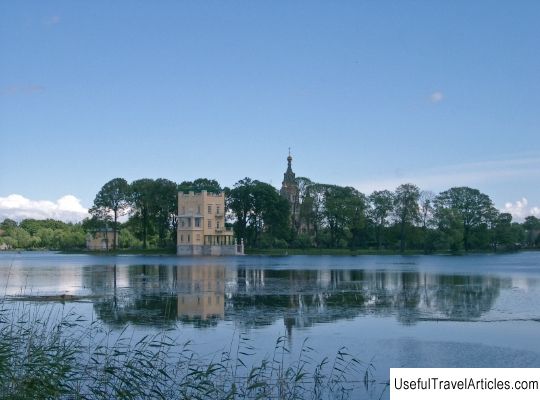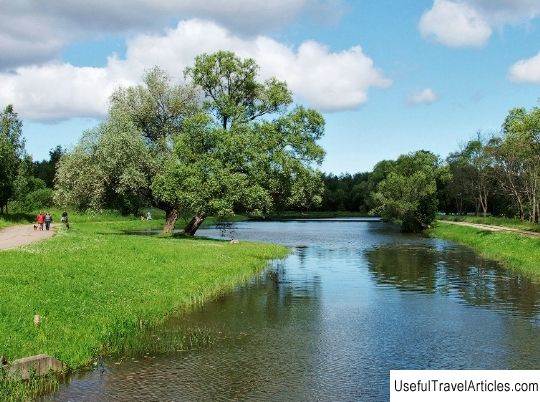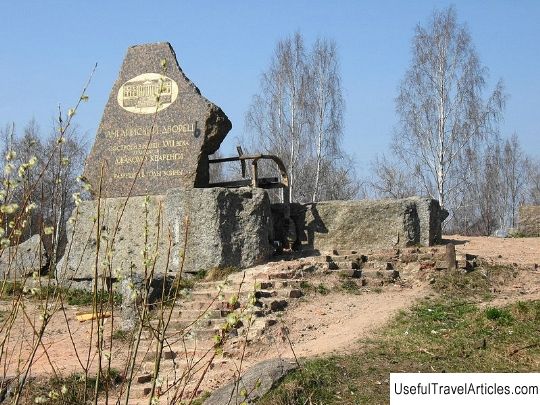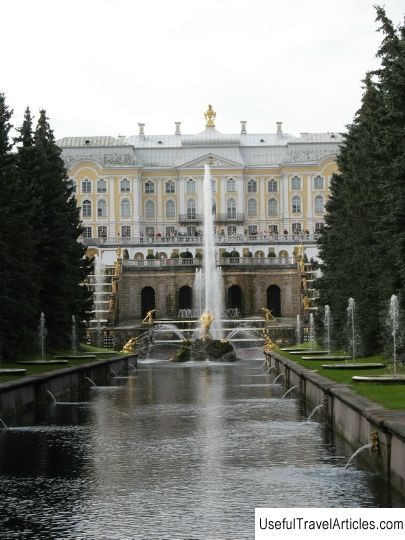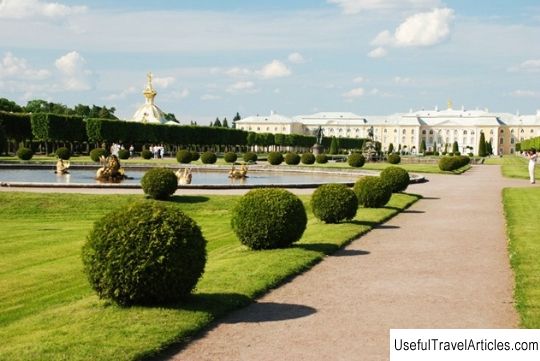Colonistsky Park description and photos - Russia - St. Petersburg: Peterhof
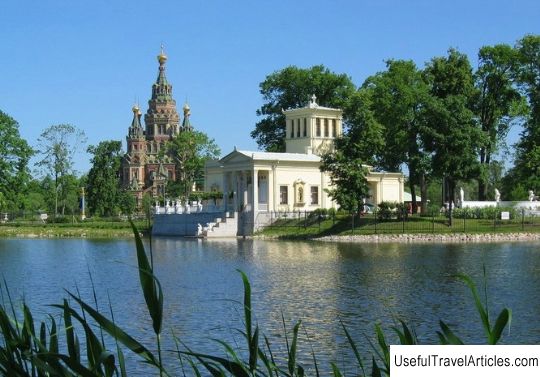
Colonistsky park description and photos - Russia - St. Petersburg: Peterhof. Detailed information about the attraction. Description, photos and a map showing the nearest significant objects. Photo and descriptionThe Colonistsky Park ("Islands") is a landscape park of Peterhof and was formed in the middle of the 19th century on a desolate, partially swampy land stretching south from the Upper Garden. The authors of the park project are the gardener Peter Ivanovich Erler, the architect Andrey Ivanovich Shtakenshneider and the engineer M. Pilsudski. The Kolonistsky Park is one of the small parks of Peterhof, its area is 29 hectares. Most of the Kolonistsky Park is occupied by the Holguin Pond, which is surrounded by an alley of silver willows. The pond is decorated with two islets, on one of which is the Holguin pavilion, and on the other - the Tsaritsyn pavilion. Holguin Pond got its name in honor of the daughter of Emperor Nicholas I - Grand Duchess Olga. In the 18th century, the area on which the Colonist Park subsequently appeared, was deaf and deserted. At that time it bore the name "Okhotnoe swamp", as there were wild game birds in the bushes. Under Nicholas I, not far from Okhotny Swamp, houses were erected, which were intended for German colonists. That is why the park became known as the Colonist Park. In 1838, the swamp was drained, and a large pond was dug in its place. The pond was 470 meters long, 300 meters wide, and 2 meters deep. Its banks were fortified with huge stones and fenced off with an imposing dam, on which an alley was broken. The water for the pond was taken from the Ropsha keys. Until now, the Kolonistsky pond serves as a pool feeding the eastern complex of the fountains of the Lower Park. In the summer, swans were released into Holguin Pond. In 1839, work began on the planning and landscaping of the park, which was completed by the end of 1841. During this period, approximately 4,000 trees and more than 7,000 shrubs were planted. The activities on the development of the park continued in the future: the redevelopment of its eastern part was carried out, the cape was raised, which cut into the lake, and so on. Ferries went between the shore of the pond and the islands, for which moorings were built in the form of cast-iron vases on pedestals. In 1842, the construction of the Tsaritsyn pavilion was started on one of the islands of the Olgin pond. Empress Alexandra Feodorovna wished that the pavilion resembled the houses of the ancient Roman city of Pompey, which died in the eruption of Mount Vesuvius, and was erected in the “Pompeian style”. The pavilion was surrounded by a magnificent garden with fountains, gazebos, entwined with greenery, corridors of trellises (light gratings on arches or pillars), marble benches and many sculptures. In 1846, on another island of the Olgina pond, a kind of structure in the style of southern Italian villas was erected, which was named the Olgina pavilion. It was erected in honor of Olga, the youngest daughter of Emperor Nicholas I, especially for her arrival in Russia for the first time after her marriage as Queen of Wurttemberg. From the building to the lake, a staircase was arranged, decorated with vases. The pavilion had a 3-storey tower, on the flat roof of which a platform with a trellis canopy entwined with greenery was built. Each floor of the tower was equipped with one room with a balcony; an internal stone staircase connected the rooms to each other. The entire remaining territory on the island was occupied by a small open garden with narrow paths, which was decorated with statues, busts, marble tables and vases. The islands served as a place where close friends and guests of the imperial family came for morning coffee or evening tea , where we rode in gondolas and boats, listened to music. Currently, the Tsaritsyn and Holguin pavilions on the islands of the Kolonist Park are museums that opened in 2005 after a comprehensive restoration.       We also recommend reading Church of Nil Stolobensky description and photos - Russia - North-West: Borovichi Topic: Colonistsky Park description and photos - Russia - St. Petersburg: Peterhof. |
